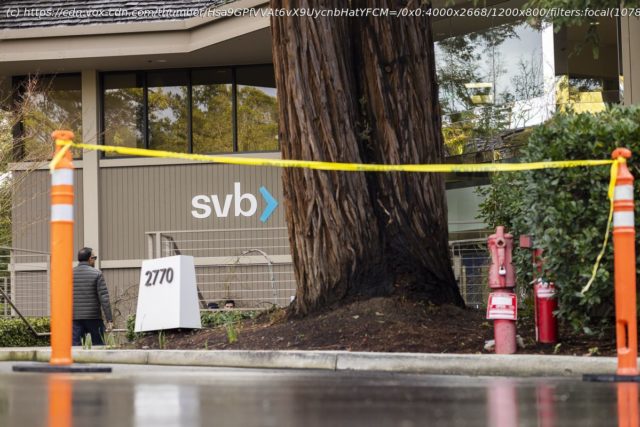A regional bank helped the tech industry grow. Now it might need to shrink.
The collapse of Silicon Valley Bank was a big deal. It didn’t just impact Silicon Valley businesses — or the many non-Silicon Valley-based businesses that banked there, including Vox’s parent company Vox Media. The end of SVB created ripple effects throughout the American banking and financial system.
It also showed how some of the practices that made Silicon Valley what it is today contributed to SVB’s demise. And it showed how Silicon Valley might not be the cradle of innovation and the pride of American business culture that it used to be. It was not a good look when some of Silicon Valley’s loudest voices — the same people who decried bailing out student loan borrowers — were begging, some in all caps, for the government to make SVB depositors whole. After days of prominent venture capitalists’ pleas, the government found a way to bail out SVB depositors without using taxpayer dollars. Nevertheless, plenty of people noticed Silicon Valley’s hypocrisy.
It’s possible it was the begging from the VCs that got the Biden administration’s attention. But multiple reports suggest that the federal government very quickly realized the need to act lest SVB’s fall trigger a larger collapse akin to the 2008 financial crisis which led to the Great Recession. And so the Biden administration stepped in, did its job, and a mass panic-inspired bank run was avoided.
But how did SVB become such an important part of the Silicon Valley ecosystem in the first place, and does its failure signify anything about Silicon Valley itself? Will a new Silicon Valley culture come out of it, maybe one that wants to move slower and fix things?
Vox talked to Silicon Valley historian Margaret O’Mara, who literally wrote the book on Silicon Valley’s history, about the bank’s place in the tech world and how the fallout from its collapse might change the region — or not. This interview has been edited for length and clarity.Sara Morrison
How intertwined is Silicon Valley Bank with the history of Silicon Valley?Margaret O’Mara
It’s deeply intertwined. It’s one of these interesting, unique creatures of what I’ve called the “entrepreneurial Galapagos” of early Silicon Valley: Firms that are catering to the particular needs of high-tech startups run by a relatively inexperienced, technically minded management team. Like law firms and venture capital firms. The bank is kind of like that.
Silicon Valley Bank was founded in 1983 by a couple of former bankers who had been working at a high-tech business but saw this gap in traditional banking. There were a lot of companies in the early ’80s — this is the personal computer boom, so there are these consumer-facing products like desktop computers and software — that the Bank of Americas and the Wells Fargos were like, “Oh, I don’t know what that does. That’s a new risky thing. I don’t think I’m gonna give you a business loan for this.”
SVB comes out of that. And it’s very much the networks that make it go. The relationships with VCs allowed them to do that. Startups had that third-party validation from VCs, so it’s very much, very deeply, deeply embedded, although it’s one of those entities that doesn’t make headlines, usually, because it’s a bank. It’s not Fortune magazine cover story stuff.Sara Morrison
Why did the tech industry love SVB so much? What did it offer that other banks didn’t? Margaret O’Mara
SVB would extend loans and did venture financing for firms that were very early stage. And there was also a personal banking dimension. They would look at a borrower’s portfolio: Someone’s trying to finance a mortgage, and they would look at their stock options. They’re taking into account those things that traditional banks often would not. And so they’re really allowing capital to flow into early-stage companies as well as to early-stage founders. This was a community bank; it was a regional bank. It also wasn’t that big, which is another separate question, separate answer.Sara Morrison
It sure seemed big …Margaret O’Mara
Well, that’s the thing. Yes, SVB is the 16th biggest now. But that is in part because of the extraordinary growth it had in the last several years. In 2015, its balance sheet was about $40 billion. And if I’m reading its last financial report right, they had over $200 billion this year. So they just grew so fast.






